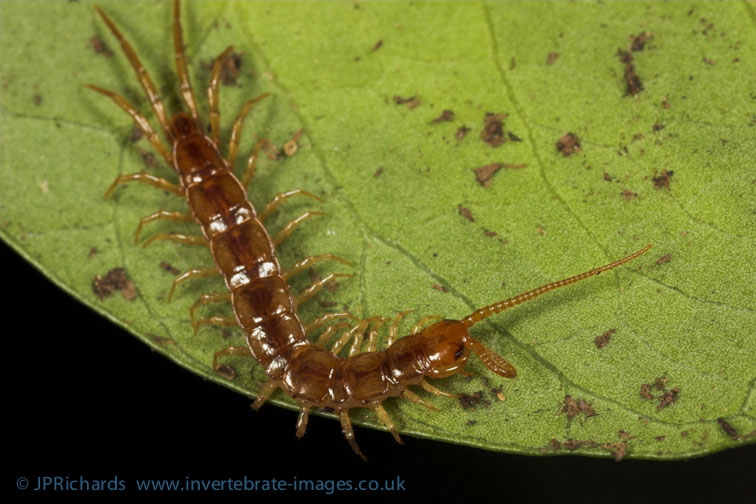Lithobius melanops Newport, 1845
Synonyms
Lithobius (Lithobius) melanops Newport, 1845
Status:
GB IUCN status: Least Concern
ID Difficulty
Identification
Lithobius is a difficult genus and at least 17 species are known from Britain and Ireland.
Lithobius melanops is one of five 'smaller species' with 2 + 2 forcipular teeth that have backward projections on tergites 9, 11 and 13. This is the most common of the options. It is usually pale brown in colour, with an indistinct darker longitudinal dorsal stripe (to 17 mm body length).
Guidelines on how to distinguish the common Lithobius melanops from the much more restricted Lithobius tricuspis are given by Barber & Gregory (2019). Lithobius borealis also looks similar.
More information to allow accurate identification is given in the published identification keys by Tony Barber (2008 & 2009).
Distribution
Lithobius melanops is very common throughout Ireland and Britain, including the Western Isles, Orkney and Shetland.
Habitat
It is typically found in drier habitats, both both inland (woodlands, heathland, gardens, churchyards, etc) and on the coast (sand dunes, shingle, vegetated sea cliffs, etc).
Although it can be found at ground level, under stones and dead wood, Lithobius melanops is often found above ground under loose bark on trees, on walls and rock faces and is often seen indoors (climbing walls).
This account is based on the 'Centipede Atlas' (Barber, 2022).
Links
ChiloBase 2.0 - World Catalogue of Centipedes: https://chilobase.biologia.unipd.it/searches/result_species/2139










